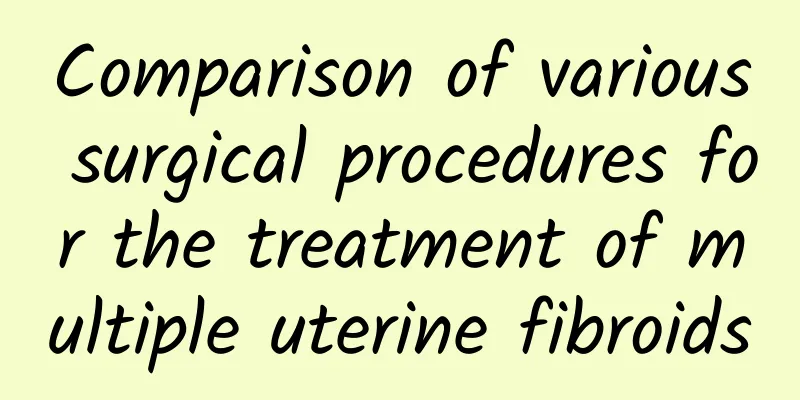Comparison of various surgical procedures for the treatment of multiple uterine fibroids

|
Surgery is a common method for treating multiple uterine fibroids, and there are two main surgical procedures, namely laparoscopic minimally invasive surgery and laparotomy. So, what is the difference between these two surgical methods? The purpose of laparoscopic surgery is the same as that of open surgery, which is to remove the fibroids as completely as possible, but neither can guarantee that there will be no omissions or recurrences. With the development of medical technology, laparoscopic surgery has been widely developed in China, but it has not reached the level of popularization. In other words, it is still a new surgical method. Not all gynecologists have this skill, but its advantages such as less trauma, quick recovery, and beautiful appearance are widely recognized. The advantages of laparoscopic minimally invasive surgery are more reflected in the slight postoperative adhesion and no obvious postoperative abdominal pain, which are significantly lower than open surgery, which can be fully reflected in the second or more surgeries of some patients. Laparoscopic surgery to remove uterine fibroids is actually the same as open surgery to remove fibroids. Fibroids that can be seen protruding outside the uterus are easy to remove. The difference is that open surgery uses the hand to touch the small fibroids buried deep in the muscle layer, while laparoscopic surgery requires the surgeon to feel through the operating instruments. The feel of open surgery can be easily obtained, while the feel of laparoscopic surgery requires the surgeon's sensitivity and laparoscopic experience. Therefore, relatively speaking, laparoscopic surgery to remove fibroids will miss some, but for skilled laparoscopic surgeons, the possibility of residues is not higher than that of open surgery. According to statistics, the 5-year recurrence rate after uterine myomectomy is 15% for open surgery and 20% for laparoscopy, but there is no statistical difference between the two. Even if there is a recurrence, if there are no symptoms and the diameter of the fibroid does not exceed 5 cm, there is no need to consider surgery, and observation is sufficient. Postoperative recurrence includes missed and recurred fibroids. The leftovers are small fibroids less than 5 mm buried deep in the surgery that are not easily discovered by the surgeon and are left behind, and then grow slowly. Another type is fibroids that did not grow during surgery but grow back later. Since the recurrence rate after laparoscopic surgery has not increased significantly, laparoscopic surgery is still recommended from the perspective of minimally invasive surgery and aesthetics. |
<<: How to prevent vaginal candidal infection for expectant mothers
>>: The causes of dysmenorrhea vary among women of different ages
Recommend
Bartholinitis diagnostic tests
The Bartholin's glands are located at the low...
What exercises can improve uterine fibroids?
Moderate exercise can have a positive impact on u...
How big is the uterine fibroid in women?
How big a female uterine fibroid needs surgical t...
Are the health foods that Mama Loves Group Buying really good? Is it suitable for children?
Although Donna is not a mother yet, a large group...
Can you still get pregnant after ectopic pregnancy? It depends on the patient's recovery.
Ectopic pregnancy is not uncommon in life. Many w...
Many people don’t know much about the harm of acute cervicitis
Acute cervicitis is a type of cervicitis. Many pe...
Who are the people who are prone to uterine fibroids?
Uterine fibroids are increasingly common in middl...
How long does it take for menopause to occur if you don't have your period?
For women over 40 years old, menopause can be con...
The most common clinical symptoms of cervical erosion
Among many diseases, there are many common clinic...
Experts will tell you what are the treatments for vulvar leukoplakia?
Vulvar leukoplakia brings great harm and pain to ...
Chest expansion water bottle exercise! The golden career line follows
The sun is shining brightly. Whether on the beach...
What foods can easily cause uterine fibroids? What foods can cause uterine fibroids to grow?
What foods can easily cause uterine fibroids? Wha...
What is the best treatment for vaginal itching and leucorrhea?
Excessive vaginal discharge and vulvar itching of...
On the fifth day of abortion, I felt pain in my lower abdomen like dysmenorrhea.
On the fifth day after abortion, the lower abdomi...
What are the precautions after painless abortion
In recent years, what are the precautions after p...









